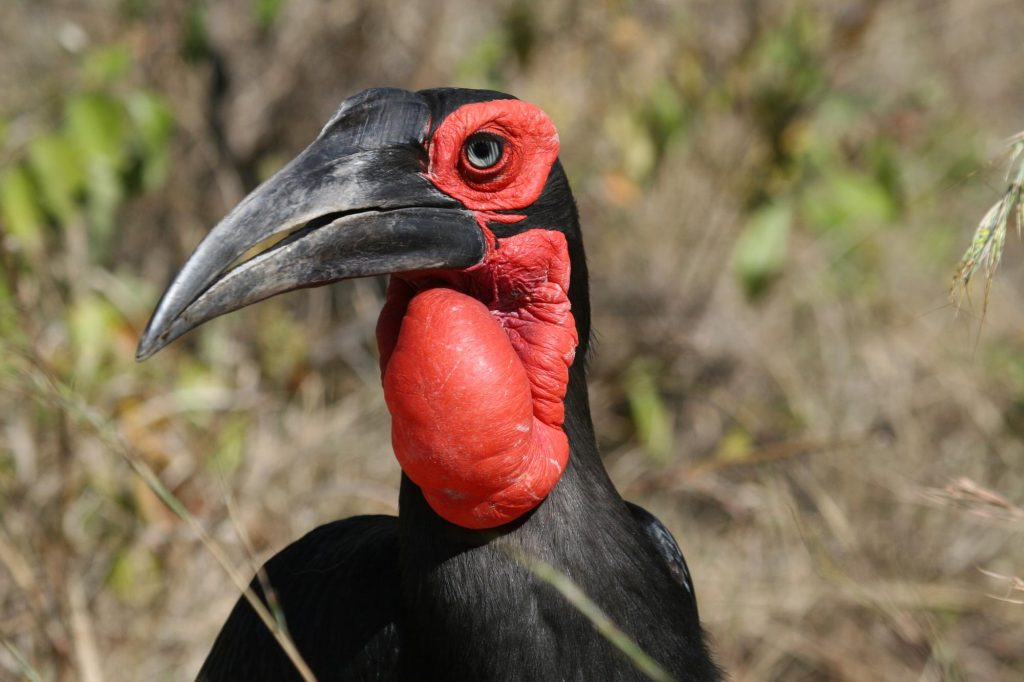5 Hornbill Facts: The National Bird of Malaysia
The hornbill is the national bird of Malaysia, so it’s no wonder Zoo Negara is home to 7 different species of hornbills. With their brightly-coloured casque and long curved bills, these birds are an interesting sight to behold. In addition, the hornbill is also an official mascot of the Democratic Action Party (DAP) in Malaysia and Sarawak’s official state bird. Want to learn more about these fascinating birds? Here are 5 interesting facts about them!
1. Hornbills Have A Strong Neck

Great Indian Hornbill | Photo Credit: steemit.com
Hornbills have strong necks because they need to support their long bills. Their necks are thicker than the average bird’s, as they develop powerful muscles from carrying their bills. On top of that, their first and second neck vertebrates are fused together – a unique characteristic of these birds – giving them the stability they need to carry their bills.
2. Sarawak, The Land of Hornbills

Rhinoceros Hornbill | Photo Credit: Thom Quine // Flickr
The Rhinoceros hornbill may be Sarawak’s state mascot, but you can also find 8 other species of hornbill here. This has earned the state its nickname “the Land of Hornbills”. The eight hornbill species native to Sarawak include the rhinoceros hornbill, black hornbill, oriental-pied hornbill, bushy-crested hornbill, helmeted hornbill, wrinkled hornbill, white-crowned hornbill, and the wreathed hornbill. Most of these birds live in Totally Protected Areas in Sarawak due to their vulnerable conservation status.
3. Not All Casques Are Created Equal

Helmeted Hornbill | Photo Credit: Craig Ansibin // YouTube
A casque is the hornbill’s distinct structure that’s located on its upper mandible. In some hornbills, the casque is barely noticeable, but in others species, it can grow quite large. The casque does not seem to serve a purpose other than securing the bill and is typically hollow in the middle. However, the casque of the helmeted hornbill is filled with solid hornbill ivory, a precious material this hornbill is often slaughtered for.
4. Female Hornbills Are Prisoners During Nesting

Yellow-billed Hornbill peering out of nest slit | Photo Credit: Trevor Kleyn
Female hornbills will usually lay their eggs inside a tree cavity, where the entrance is eventually sealed off using mud, fruit pulp, and droppings. All that remains is a small and narrow slit for the male hornbill to feed the female, and later on, their offspring. The sealing is done to prevent predators such as monkeys, snakes, or squirrels from entering. When the young hatch, the male makes up to 70 trips a day to bring food – talk about hard work!
5. Hornbills Have Loud Calls

Southern Ground-hornbill | Photo Credit: hbw.com
The calls of a hornbill are loud and each of them has their own distinct call. For instance, the Von der Decken’s hornbills produce a clucking sound, while the great Indian hornbill roars. The largest hornbill, the southern ground hornbill produces a deep resounding bass call that can be heard within a 2.5-mile radius – a testament to how loud hornbills are.



